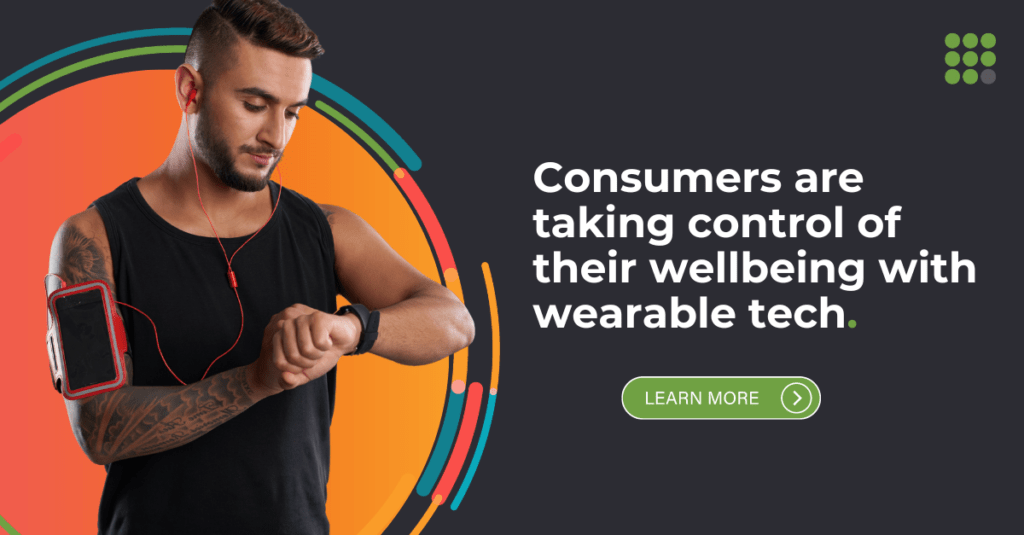There’s a significant problem in the product testing industry: the lack of diversity in skin tone among test subjects. This problem isn’t confined to one area; it’s seen in everything from cosmetics to healthcare. Many products are tested primarily on a narrow range of skin tones, leaving others potentially underserved or overlooked.
But this issue goes beyond just ethics. It’s also a poor business decision. In today’s diverse market, consumers expect products that cater to a wide variety of needs. Ignoring skin tone in product testing doesn’t just show a lack of understanding of the diverse customer base; it also misses a significant market opportunity.
The bottom line is clear: considering skin color in product testing isn’t merely the right thing to do; it’s a smart business move. Companies that fail to recognize this will likely fall behind in a world that increasingly values inclusivity and representation.
Skin Tone Bias in Product Development
Historically, product development and testing have been heavily skewed towards a limited range of skin tones. This bias is not a recent phenomenon; it’s deeply ingrained in the industry. In many cases, products, especially in sectors like cosmetics and skincare, have been tested primarily on lighter skin tones.
This limited scope in testing has had real-world consequences. It means that the efficacy, safety, and suitability of products for various skin tones have often gone unexamined. People with skin tones outside the narrow range used in testing can find themselves with products that are not only ineffective but sometimes harmful.
Focusing on a limited range of skin tones in product testing isn’t just a historical footnote; it’s a continuing problem. Even today, with a growing awareness of the importance of diversity, many companies still fail to include a representative sample of skin tones in their testing procedures.
This bias in product development doesn’t just affect the individuals who are underserved by these products; it also reflects a broader failure of the industry to recognize and cater to the diversity of its customer base. The result is a market that often doesn’t meet the needs of a significant portion of the population.
Consequences
The consequences of limiting product testing to a narrow range of skin tones are both serious and far-reaching. Here’s how this oversight has led to issues:
- Ineffectiveness: Products tested on a limited skin tone range may not work as intended for people with different skin tones. This can result in wasted money and dissatisfaction for consumers who find that the products simply don’t meet their needs.
- Health Risks: More alarmingly, some products can harm individuals with skin tones not considered during testing. This can lead to skin irritations, allergic reactions, or more severe health problems. For example, certain skincare products might cause discoloration or sensitivities in darker skin tones if they were only tested on lighter ones.
- Exclusion: By failing to consider a wide range of skin tones, companies effectively exclude a significant portion of the population from access to suitable products. This can reinforce feelings of marginalization and further widen societal gaps.
- Financial Loss for Companies: Businesses that overlook the need for diverse skin tone testing can suffer financially. They may lose potential customers who find their products unsuitable, and they risk damaging their reputation if products are found to be harmful to certain consumers.
- Legal Repercussions: Companies may also face legal challenges if their products are found to cause harm due to a lack of comprehensive testing. This can result in costly lawsuits and regulatory penalties.
In short, the failure to include various skin tones in product testing isn’t just an oversight; it’s a decision that can lead to unsatisfactory, harmful products that don’t serve the needs of all consumers. It’s a problem that affects individual well-being, corporate bottom lines, and societal inclusivity.
Case Studies
The lack of diverse skin tone testing is not an abstract issue; it has manifested in real-world failures and inefficiencies in various products. Here are some illustrative examples:
- Certain Sunscreens: Some sunscreens primarily tested on lighter skin tones have been found to leave a visible, unappealing residue on darker skin. This resulted in dissatisfaction and limited options for individuals with darker skin tones looking for effective sun protection.
- Skin Care Products with Bleaching Agents: Products containing specific bleaching or lightening agents have caused severe skin reactions in users with skin tones that weren’t considered during testing. This lack of consideration has led to health issues and loss of consumer trust in some brands.
- Makeup Shade Ranges: Many makeup brands have historically offered a limited range of foundation shades, primarily catering to lighter skin tones. This lack of diversity in shade options left many consumers unable to find a match for their skin tone, leading to dissatisfaction and loss of potential sales for the companies.
- Hair Care Products for Different Ethnicities: Hair care products tested without considering diverse hair types and ethnic backgrounds have led to products that don’t work for all consumers. In some cases, products intended for one hair type have proven damaging to others due to differences in hair structure and needs.
- Medical Devices and Diagnostic Tools: Even in the medical field, the lack of diverse skin tone testing has had consequences. For example, certain diagnostic tools calibrated for lighter skin have been less accurate when used on darker skin, leading to incorrect diagnoses and treatment.
These case studies reveal a pattern of oversight and failure to consider the full spectrum of skin tones. They illustrate the tangible negative impact of this neglect on both consumers and businesses. It’s clear evidence that diverse skin tone testing is not merely a theoretical concern but a practical necessity with real consequences.
The Economic Implications
Market Dynamics:
Ignoring skin tone in product testing isn’t just a social or ethical concern; it’s a significant economic misstep. By failing to test products on a diverse range of skin tones, companies inadvertently overlook large segments of the market. This neglect can result in:
- Limited Reach: Companies miss out on potential customers by not offering products catering to various skin tones. This effectively narrows their market reach and limits growth opportunities.
- Reduced Competitiveness: As more brands recognize the importance of inclusivity, those that don’t may find themselves at a competitive disadvantage, unable to offer products that meet the needs of a diverse consumer base.
- Missed Innovation Opportunities: By ignoring the unique needs and preferences of various skin tones, companies may miss out on opportunities to innovate and create products that could resonate with broader audiences.
Brand Perception and Loyalty:
Inclusivity in product testing doesn’t just lead to better products; it can also positively impact a brand’s reputation and customer loyalty:
- Enhanced Reputation: Companies that actively engage in diverse product testing demonstrate a commitment to understanding and serving all their customers, which can enhance brand perception.
- Increased Loyalty: When consumers see that a brand is making efforts to cater to their specific needs and preferences, they are more likely to become loyal customers. This loyalty translates into repeat business and positive word-of-mouth.
- Alignment with Social Values: Modern consumers often align their purchasing decisions with their values. Brands that embrace diversity and inclusivity may attract customers who prioritize these principles.
Financial Impact:
The financial implications of inclusive product testing are substantial. Here are some key statistics and facts:
- Potential Market Growth: The global cosmetics market for people of color is projected to reach significant figures in the coming years, representing a substantial growth opportunity for brands that cater to diverse skin tones.
- Losses from Exclusion: Failure to embrace diversity in product testing can lead to lost sales and missed market opportunities. For example, brands that have faced backlash for limited shade ranges have seen declines in sales and market share.
- Cost of Remediation: Ignoring diverse skin tones during initial testing can lead to costly post-launch adjustments or recalls if products prove unsuitable or harmful to certain consumers.
The economic implications of ignoring skin tone in product testing are multifaceted. They touch on market dynamics, brand perception, customer loyalty, and financial outcomes. Companies that fail to recognize the importance of skin tone diversity risk not only ethical shortcomings but also tangible economic losses. Conversely, those that embrace this diversity stand to gain both socially and financially.
The Ethical Considerations
Moral Responsibility:
Companies have an ethical obligation to ensure their products are safe and effective for all users. This responsibility goes beyond mere compliance with regulations:
- Safety: It’s not enough to ensure that a product is safe for a segment of the population; it must be safe for all intended users. In testing, failure to consider diverse skin tones can lead to harmful products reaching the market.
- Effectiveness: Ethical product development involves creating items that refrain from causing harm and fulfill their intended function for all users. Ineffectiveness for a portion of the population due to biased testing is an ethical failure.
- Accountability: Companies must be accountable for the choices they make in product testing. Ignoring diversity in skin tones isn’t an oversight; it’s a decision with ethical implications.
Diversity and Inclusion:
Inclusive product testing aligns with broader societal movements toward equality and fairness. It reflects:
- Recognition of Diversity: By embracing diverse skin tones in product testing, companies acknowledge and value the diversity of the human population.
- Promotion of Equality: Inclusive testing helps level the playing field by ensuring that products are suitable for all users, not just a privileged few.
- Alignment with Social Progress: Companies that practice inclusive testing place themselves at the forefront of social progress, aligning with consumer values and societal goals.
Environmental Impact:
While not immediately obvious, inclusive product testing may also be tied to more environmentally responsible production practices:
- Responsible Sourcing: Inclusive testing may lead to increased scrutiny of ingredient sourcing, promoting the use of sustainable and ethically-sourced materials.
- Reduction of Waste: By ensuring that products are suitable for a broader range of consumers, companies may reduce the likelihood of products being discarded due to ineffectiveness or harm, thereby minimizing waste.
- Holistic Approach: Embracing inclusivity in product testing might be part of a broader ethical approach that considers environmental impact, aligning the company with best practices in social and environmental responsibility.
The ethical considerations surrounding skin tone diversity in product testing are multifaceted and significant. They involve not only the moral responsibility to create safe and effective products but also the alignment with broader societal values of diversity, inclusion, and possibly environmental stewardship. Failure to consider these aspects is not merely a business error; it’s a lapse in ethical judgment that can have far-reaching consequences.
The Path Forward
Current Innovations and Initiatives:
While challenges persist, there are also promising developments in the field of inclusive product testing. Several companies and organizations are leading the way:
- Pioneering Brands: Some companies in the cosmetics and healthcare sectors have committed to inclusive testing, offering products tailored to a wide range of skin tones. These brands are enjoying commercial success and receiving accolades for their responsible practices.
- Industry Collaborations: Various industry groups and non-profit organizations are working together to establish guidelines and best practices for inclusive testing, providing valuable resources and support to companies wishing to improve their testing procedures.
- Research and Development: Academic and commercial research centers are conducting studies into the unique needs of different skin tones, paving the way for more targeted and effective product development.
Strategies for Change:
Achieving greater inclusivity in product testing is not an insurmountable challenge. Here are tangible strategies that both companies and regulators can adopt:
- Diverse Representation in Clinical Trials: Ensuring that clinical trials include a wide array of skin tones can provide a more accurate understanding of how products will perform across different populations.
- Investment in Targeted Research: Companies can invest in market research to understand the specific needs and reactions of various skin tones, leading to more inclusive product development.
- Regulatory Guidelines: Regulators can establish clear guidelines and incentives for inclusive product testing, holding companies accountable for their practices and rewarding those prioritizing diversity.
- Transparency and Reporting: By publicly reporting on testing demographics and practices, companies can demonstrate their commitment to inclusivity and allow consumers and watchdogs to hold them accountable.
- Education and Training: Providing training to product development teams on the importance of diversity and how to achieve it can foster a culture of inclusivity within companies.
When implemented, these strategies can transform the landscape of product testing, making it more reflective of our diverse world. While the path forward may require concerted effort, the potential rewards in terms of ethical alignment, market success, and societal progress are well worth the investment.
Final Thoughts
The question of skin tone diversity in product testing is more than a niche concern or a fleeting trend. It reflects who we are as a society and how we choose to treat one another. The choices made in product development and testing are not confined to laboratories and boardrooms; they reverberate in the lives of real people, affecting their health, self-esteem, and place in the world.
The effort to create products that respect and embrace our shared humanity should not be seen as an extra step or a marketing ploy. It should be a fundamental expectation, an acknowledgment that diversity is not a problem to be solved but a reality to be celebrated.
Inclusive product testing is not simply a matter of business acumen or regulatory compliance. It is a testament to our collective values, our belief in fairness, equality, and the inherent dignity of all individuals, regardless of their skin tone.
The path forward is not just about products; it’s about principles. It’s not just about consumption; it’s about compassion. It’s not just about what we create; it’s about who we are.
Get regular insights
Keep up to date with the latest insights from our research as well as all our company news in our free monthly newsletter.





 Senior Marketing Executive
Senior Marketing Executive Sales & Marketing
Sales & Marketing General Manager PR -Internal Communications & Government Affairs
General Manager PR -Internal Communications & Government Affairs Vital Strategies
Vital Strategies
 Customer Intelligence Director
Customer Intelligence Director